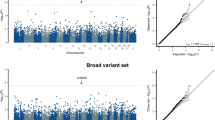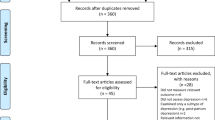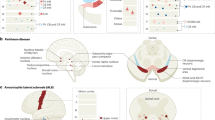Abstract
Cognitive functions are highly heritable and the impact of complex genetic interactions, though undoubtedly important, has received little investigation. Here we show in an animal model and in a human neuroimaging experiment a consistent non-linear interaction between two genes—catechol-O-methyl transferase (COMT) and dysbindin (dys; dystrobrevin-binding protein 1 (DTNBP1))—implicated through different mechanisms in cortical dopamine signaling and prefrontal cognitive function. In mice, we found that a single genetic mutation reducing expression of either COMT or DTNBP1 alone produced working memory advantages, while, in dramatic contrast, genetic reduction of both in the same mouse produced working memory deficits. We found evidence of the same non-linear genetic interaction in prefrontal cortical function in humans. In healthy volunteers (N=176) studied with functional magnetic resonance imaging during a working memory paradigm, individuals homozygous for the COMT rs4680 Met allele that reduces COMT enzyme activity showed a relatively more efficient prefrontal engagement. In contrast, we found that the same genotype was less efficient on the background of a dys haplotype associated with decreased DTNBP1 expression. These results illustrate that epistasis can be functionally multi-directional and non-linear and that a putatively beneficial allele in one epistastic context is a relatively deleterious one in another. These data also have important implications for single-locus association analyses of complex traits.
This is a preview of subscription content, access via your institution
Access options
Subscribe to this journal
Receive 12 print issues and online access
$259.00 per year
only $21.58 per issue
Buy this article
- Purchase on Springer Link
- Instant access to full article PDF
Prices may be subject to local taxes which are calculated during checkout



Similar content being viewed by others
References
Davies G, Tenesa A, Payton A, Yang J, Harris SE, Liewald D et al. Genome-wide association studies establish that human intelligence is highly heritable and polygenic. Mol Psychiatry 2011; 16: 996–1005.
Papaleo F, Lipska BK, Weinberger DR . Mouse models of genetic effects on cognition: relevance to schizophrenia. Neuropharmacology 2012; 62: 1204–1220.
Robbins TW, Kousta S . Uncovering the genetic underpinnings of cognition. Trends Cogn Sci 2011; 15: 375–377.
Cools R, D'Esposito M . Inverted-U-shaped dopamine actions on human working memory and cognitive control. Biol Psychiatry 2011; 69: e113–e125.
Goldman-Rakic PS . The cortical dopamine system: role in memory and cognition. Adv Pharmacol 1998; 42: 707–711.
Verma A, Moghaddam B . NMDA receptor antagonists impair prefrontal cortex function as assessed via spatial delayed alternation performance in rats: modulation by dopamine. J Neurosci 1996; 16: 373–379.
Seamans JK, Gorelova N, Durstewitz D, Yang CR . Bidirectional dopamine modulation of GABAergic inhibition in prefrontal cortical pyramidal neurons. J Neurosci 2001; 21: 3628–3638.
Williams GV, Goldman-Rakic PS . Modulation of memory fields by dopamine D1 receptors in prefrontal cortex. Nature 1995; 376: 572–575.
Arnsten AF, Cai JX, Murphy BL, Goldman-Rakic PS . Dopamine D1 receptor mechanisms in the cognitive performance of young adult and aged monkeys. Psychopharmacology 1994; 116: 143–151.
Vijayraghavan S, Wang M, Birnbaum SG, Williams GV, Arnsten AF . Inverted-U dopamine D1 receptor actions on prefrontal neurons engaged in working memory. Nat Neurosci 2007; 10: 376–384.
Mattay VS, Goldberg TE, Fera F, Hariri AR, Tessitore A, Egan MF et al. Catechol O-methyltransferase val158-met genotype and individual variation in the brain response to amphetamine. Proc Natl Acad Sci USA 2003; 100: 6186–6191.
Kaenmaki M, Tammimaki A, Myohanen T, Pakarinen K, Amberg C, Karayiorgou M et al. Quantitative role of COMT in dopamine clearance in the prefrontal cortex of freely moving mice. J Neurochem 2010; 114: 1745–1755.
Egan MF, Goldberg TE, Kolachana BS, Callicott JH, Mazzanti CM, Straub RE et al. Effect of COMT Val108/158 Met genotype on frontal lobe function and risk for schizophrenia. Proc Natl Acad Sci USA 2001; 98: 6917–6922.
Papaleo F, Crawley JN, Song J, Lipska BK, Pickel J, Weinberger DR et al. Genetic dissection of the role of catechol-O-methyltransferase in cognition and stress reactivity in mice. J Neurosci 2008; 28: 8709–8723.
Sambataro F, Reed JD, Murty VP, Das S, Tan HY, Callicott JH et al. Catechol-O-methyltransferase valine(158)methionine polymorphism modulates brain networks underlying working memory across adulthood. Biol Psychiatry 2009; 66: 540–548.
Scheggia D, Sannino S, Scattoni ML, Papaleo F . COMT as a drug target for cognitive functions and dysfunctions. CNS Neurol Disord Drug Targets 2012; 11: 209–221.
Straub RE, Jiang Y, MacLean CJ, Ma Y, Webb BT, Myakishev MV et al. Genetic variation in the 6p22.3 gene DTNBP1, the human ortholog of the mouse dysbindin gene, is associated with schizophrenia. Am J Hum Genet 2002; 71: 337–348.
Burdick KE, Lencz T, Funke B, Finn CT, Szeszko PR, Kane JM et al. Genetic variation in DTNBP1 influences general cognitive ability. Hum Mol Genet 2006; 15: 1563–1568.
Fallgatter AJ, Herrmann MJ, Hohoff C, Ehlis AC, Jarczok TA, Freitag CM et al. DTNBP1 (dysbindin) gene variants modulate prefrontal brain function in healthy individuals. Neuropsychopharmacology 2006; 31: 2002–2010.
Papaleo F, Weinberger DR . Dysbindin and schizophrenia: it's dopamine and glutamate all over again. Biol Psychiatry 2011; 69: 2–4.
Papaleo F, Yang F, Garcia S, Chen J, Lu B, Crawley JN et al. Dysbindin-1 modulates prefrontal cortical activity and schizophrenia-like behaviors via dopamine/D2 pathways. Mol Psychiatry 2012; 17: 85–98.
Jentsch JD, Trantham-Davidson H, Jairl C, Tinsley M, Cannon TD, Lavin A . Dysbindin modulates prefrontal cortical glutamatergic circuits and working memory function in mice. Neuropsychopharmacology 2009; 34: 2601–2608.
Dickman DK, Davis GW . The schizophrenia susceptibility gene dysbindin controls synaptic homeostasis. Science 2009; 326: 1127–1130.
Iizuka Y, Sei Y, Weinberger DR, Straub RE . Evidence that the BLOC-1 protein dysbindin modulates dopamine D2 receptor internalization and signaling but not D1 internalization. J Neurosci 2007; 27: 12390–12395.
Ji Y, Yang F, Papaleo F, Wang HX, Gao WJ, Weinberger DR et al. Role of dysbindin in dopamine receptor trafficking and cortical GABA function. Proc Natl Acad Sci USA 2009; 106: 19593–19598.
Gogos JA, Morgan M, Luine V, Santha M, Ogawa S, Pfaff D et al. Catechol-O-methyltransferase-deficient mice exhibit sexually dimorphic changes in catecholamine levels and behavior. Proc Natl Acad Sci USA 1998; 95: 9991–9996.
Callicott JH, Mattay VS, Verchinski BA, Marenco S, Egan MF, Weinberger DR . Complexity of prefrontal cortical dysfunction in schizophrenia: more than up or down. Am J Psychiatry 2003; 160: 2209–2215.
Meyer-Lindenberg A, Nichols T, Callicott JH, Ding J, Kolachana B, Buckholtz J et al. Impact of complex genetic variation in COMT on human brain function. Mol Psychiatry 2006; 11: 867–877, 797.
Rasetti R, Sambataro F, Chen Q, Callicott JH, Mattay VS, Weinberger DR . Altered cortical network dynamics: a potential intermediate phenotype for schizophrenia and association with ZNF804A. Arch Gen Psychiatry 2011; 68: 1207–1217.
Cox MM, Tucker AM, Tang J, Talbot K, Richer DC, Yeh L et al. Neurobehavioral abnormalities in the dysbindin-1 mutant, sandy, on a C57BL/6J genetic background. Genes Brain Behav 2009; 8: 390–397.
Talbot K, Ong WY, Blake DJ, Tang J, Louneva N, Carlson GC et al. Dysbindin-1 and its protein family. In: Javitt DC, Kantrowitz J (eds). Handbook of Neurochemistry and Molecular Neurobiology vol. 27 3rd edn Springer Science: New York, NY, USA, 2009 pp 107–241.
Elvevag B, Goldberg TE . Cognitive impairment in schizophrenia is the core of the disorder. Crit Rev Neurobiol 2000; 14: 1–21.
Kellendonk C, Simpson EH, Polan HJ, Malleret G, Vronskaya S, Winiger V et al. Transient and selective overexpression of dopamine D2 receptors in the striatum causes persistent abnormalities in prefrontal cortex functioning. Neuron 2006; 49: 603–615.
Arnsten AF, Cai JX, Steere JC, Goldman-Rakic PS . Dopamine D2 receptor mechanisms contribute to age-related cognitive decline: the effects of quinpirole on memory and motor performance in monkeys. J Neurosci 1995; 15 (5 Pt 1): 3429–3439.
Luciana M, Depue RA, Arbisi P, Leon A . Facilitation of working memory in humans by a D2 dopamine receptor agonist. J Cogn Neurosci 1992; 4: 58–68.
Mehta MA, Swainson R, Ogilvie AD, Sahakian J, Robbins TW . Improved short-term spatial memory but impaired reversal learning following the dopamine D(2) agonist bromocriptine in human volunteers. Psychopharmacology 2001; 159: 10–20.
Wang M, Vijayraghavan S, Goldman-Rakic PS . Selective D2 receptor actions on the functional circuitry of working memory. Science 2004; 303: 853–856.
Chen J, Lipska BK, Halim N, Ma QD, Matsumoto M, Melhem S et al. Functional analysis of genetic variation in catechol-O-methyltransferase (COMT): effects on mRNA, protein, and enzyme activity in postmortem human brain. Am J Hum Genet 2004; 75: 807–821.
Bray NJ, Preece A, Williams NM, Moskvina V, Buckland PR, Owen MJ et al. Haplotypes at the dystrobrevin binding protein 1 (DTNBP1) gene locus mediate risk for schizophrenia through reduced DTNBP1 expression. Hum Mol Genet 2005; 14: 1947–1954.
Williams NM, Preece A, Morris DW, Spurlock G, Bray NJ, Stephens M et al. Identification in 2 independent samples of a novel schizophrenia risk haplotype of the dystrobrevin binding protein gene (DTNBP1). Arch Gen Psychiatry 2004; 61: 336–344.
Bigos KL, Weinberger DR . Imaging genetics—days of future past. Neuroimage 2010; 53: 804–809.
Mier D, Kirsch P, Meyer-Lindenberg A . Neural substrates of pleiotropic action of genetic variation in COMT: a meta-analysis. Mol Psychiatry 2010; 15: 918–927.
Callicott JH, Mattay VS, Bertolino A, Finn K, Coppola R, Frank JA et al. Physiological characteristics of capacity constraints in working memory as revealed by functional MRI. Cereb Cortex 1999; 9: 20–26.
Apud JA, Mattay V, Chen J, Kolachana BS, Callicott JH, Rasetti R et al. Tolcapone improves cognition and cortical information processing in normal human subjects. Neuropsychopharmacology 2007; 32: 1011–1020.
Gao WJ, Goldman-Rakic PS . Selective modulation of excitatory and inhibitory microcircuits by dopamine. Proc Natl Acad Sci USA 2003; 100: 2836–2841.
Klassen T, Davis C, Goldman A, Burgess D, Chen T, Wheeler D et al. Exome sequencing of ion channel genes reveals complex profiles confounding personal risk assessment in epilepsy. Cell 2011; 145: 1036–1048.
Acknowledgements
We thank L Erickson, S. Garcia and T. Qingjun for technical assistance. We thank Dr M. Karayiorgou and Dr J A Gogos (Columbia University, New York, NY, USA) and Dr B. Lu (NIMH, Bethesda, MD, USA) for generously donating the COMT−/− and dys−/− mouse breeders, respectively. We thank Dr JN Crawley (NIMH, Bethesda, MD, USA) for important support in the mouse phenotyping and Dr J Chen for help with many aspects of mouse husbandry. This research was supported by the Intramural Program of the NIMH, the Lieber Institute for Brain Development, the Istituto Italiano di Tecnologia and the Marie Curie FP7-Reintegration-Grant No. 268247.
Author information
Authors and Affiliations
Corresponding authors
Ethics declarations
Competing interests
The authors declare no conflict of interest.
Additional information
Supplementary Information accompanies the paper on the Molecular Psychiatry website
Supplementary information
Rights and permissions
About this article
Cite this article
Papaleo, F., Burdick, M., Callicott, J. et al. Epistatic interaction between COMT and DTNBP1 modulates prefrontal function in mice and in humans. Mol Psychiatry 19, 311–316 (2014). https://doi.org/10.1038/mp.2013.133
Received:
Revised:
Accepted:
Published:
Issue Date:
DOI: https://doi.org/10.1038/mp.2013.133
Keywords
This article is cited by
-
A genetics-first approach to understanding autism and schizophrenia spectrum disorders: the 22q11.2 deletion syndrome
Molecular Psychiatry (2023)
-
Dysbindin-1A modulation of astrocytic dopamine and basal ganglia dependent behaviors relevant to schizophrenia
Molecular Psychiatry (2022)
-
The epistatic interaction between the dopamine D3 receptor and dysbindin-1 modulates higher-order cognitive functions in mice and humans
Molecular Psychiatry (2021)
-
Loss of dysbindin-1 affects GABAergic transmission in the PFC
Psychopharmacology (2019)
-
An approach to monitoring home-cage behavior in mice that facilitates data sharing
Nature Protocols (2018)



